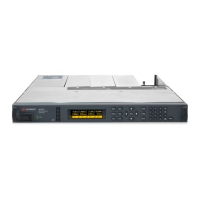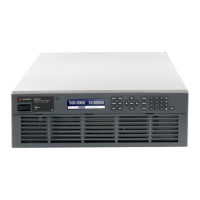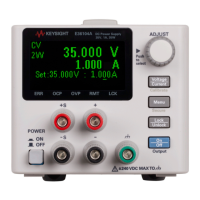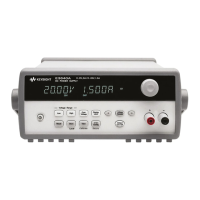
Do you have a question about the Keysight Technologies N6900 Series and is the answer not in the manual?
| Brand | Keysight Technologies |
|---|---|
| Model | N6900 Series |
| Category | Power Supply |
| Language | English |
Provides general safety precautions to be observed during all phases of instrument operation.
Lists SCPI commands by subsystem, providing a quick reference for instrument control.
Presents detailed specifications and characteristics for various Keysight N6900 and N7900 series models.
Details how to make connections for a single unit, including line cord, output, and sense connections.
Explains how to connect multiple units in parallel for increased current capability, including setup and considerations.
Describes how to connect units in series to increase voltage capability, including important considerations and diode usage.
Explains how to connect to the instrument using GPIB, USB, and LAN communication interfaces.
Covers essential output programming functions: priority modes, voltage, current, slew rate, and relays.
Details various output protection functions like OVP, OCP, watchdog timers, and user-defined protection.
Explains how to generate output transients using step, list, and arbitrary waveform functions.
Covers measurement techniques including average, NPLC, windowing, and triggering for voltage, current, and power.
Explains how to use the Power Assistant to configure signal routing for triggers and digital outputs.
Lists SCPI commands organized by subsystem, offering a comprehensive reference for instrument control.
Describes self-test and performance verification tests to ensure the instrument meets specifications.
Details the procedure to verify voltage programming and readback accuracy within specifications.
Describes the procedure to verify current programming and measurement functions within specifications.
Checks the power supply's ability to sink current, verifying up to 10% or 100% of rated output current.
Outlines the steps for electronic calibration, including mode entry, voltage, current, and resistance calibration.
Explains the power-on and user-initiated self-test procedures to verify instrument operational status.
Details firmware versions, required software, and the procedure for updating the instrument's firmware.











